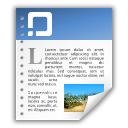| dc.description.abstract | Hawai'i is a culturally and ethnically diverse state, with the 2006 U.S. Census reporting the state's demographics as 40% Asian, 9.1 % Native Hawai'ian, 19.4% multiracial, 7.8% Hispanic or Latino origin, 24.7% white, and 2.5% black. The students in Hawai'i's public schools live and work together everyday in such diverse conditions. The purpose of this project is to use research in the areas of learners and learning, learning environment, curriculum and instructional strategies, and assessment to create a third and fourth grade integrated social studies and language arts unit on culture for a Hawai'ian classroom. The research discovered in each area provides guidance to the construction of the unit. In the learners and learning category, Hawai'ian students' culture and ethnicity are identified and current and former Hawai'i public school teachers provide insights into their lives. The human relations approach is described in the research in the learning environment category. The curriculum and instructional strategies category is divided into multicultural education curriculum, language arts curriculum, and social studies curriculum. The multicultural education curriculum section discusses Emily Style's window and mirror concept, the language arts curriculum section details Nancie Atwell's writing and reading workshops, and the social studies curriculum section focuses on Tarry Lindquist's curriculum planning disk and Windows on the World unit. In the assessment category, Grant Wiggins and Jay McTighe's approach to unit planning is reviewed with an emphasis on how to evidence student learning. The research helped generate a unit plan that explores children's own cultural identities, the cultural identities of their peers, and the cultural identities of people in different countries. The first half of the unit focuses on children's reflection, or mirror, in the curriculum. They identify their cultural identities, create mirrors as artistic expressions of these identities, and further explain their cultural identities in a short autobiography that they paste inside their mirrors. The children share their cultures with one another and discuss the similarities and differences in one another's mirrors. The second half of the project engages students to think more about similarities and differences in culture. Students choose countries to study and create windows on those countries through maps, informational data boxes, and research papers. Students share their countries' cultures with their classmates and reflect on the similarities between those countries' cultures and their own cultural identities. | en |

